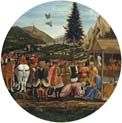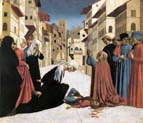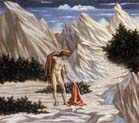Domenico Veneziano
c. 1420-1461 Italy/Early Renaissance
Click an Image to Enlarge
adoration
of the magi

annunciation

madonna and child

matteo olivieri

michele olivieri

miracles of saint
zenobius

portrait of a young
woman

st john the baptist
and st francis

santa lucia de
magnoli altarpiece

the madonna
and child

martyrdom of
saint lucy

stygmata of saint
francis

john the baptist
in the desert

the virgin
and child

virgin and child
